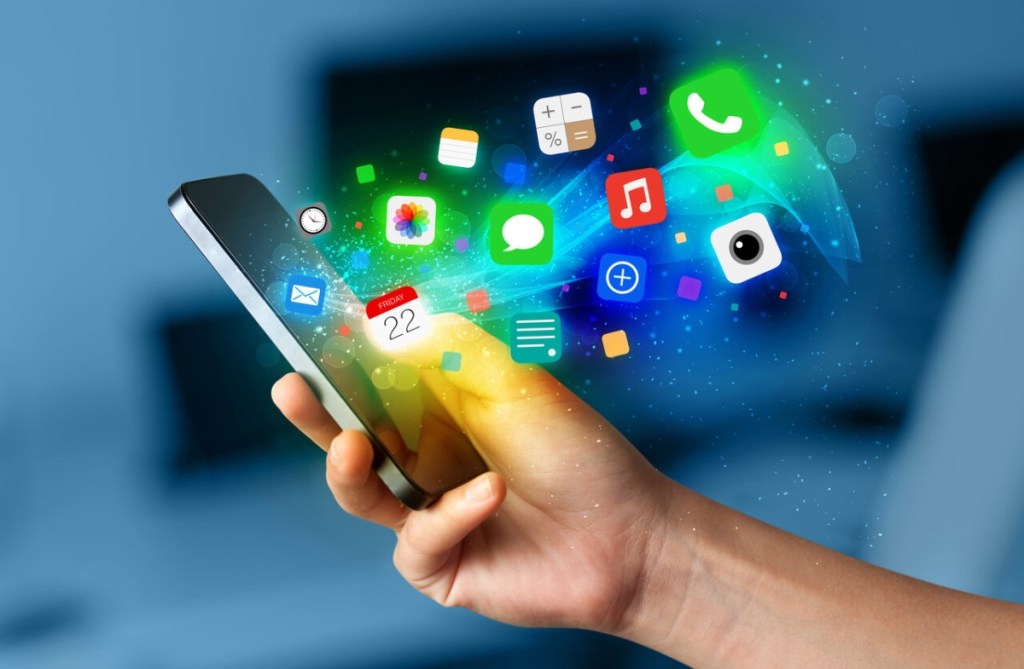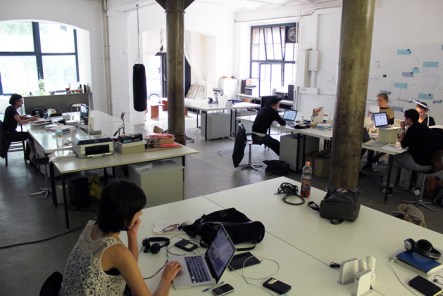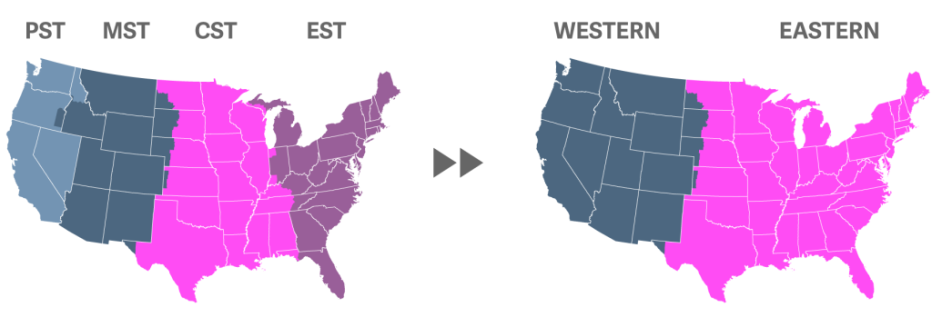It’s the end of the year, and you are starting to feel sluggish. Scrolling social media endlessly or putting off tasks are everyday bad habits that society picks up in December. Why not start now with some New Years’ resolutions and download some productivity apps that can help get you out of that slump? We’ve done some research and found a few apps that can help. Here are four apps to increase productivity for the end of the year and the start of next year: 1. Todoist App (Windows, Mac, iOS, Android, Chrome, Safari, Firefox). Todoist is a task management tool that promises to make complex to-do lists manageable. This app is for individuals, helping you track your tasks and ensure nothing gets forgotten. Key features of Todoist include task management, prioritizing tasks, project goals, and reports. Todoist offers a slick, cross-platform interface that makes it quick and easy to manage functions if you struggle to keep on top of your to-do list. 2. Trello App (Windows, Mac, iOS, Android, and web). Trello is like Todoist, except it is for collaborative teams. Tasks are added and organized on “to-do,” “going,” and “done” statuses, which helps teams keep track of progress. Tasks can be grouped into boards and cards, which contain multiple functions in themselves. Individual duties can be assigned to groups or team members with deadlines and checklists. Key features of Trello include project management, to-do lists, Trello boards, working with anyone, and instant messaging. Instant messaging makes it easy for teams to communicate and collaborate, especially in today’s world of working from home. 3, Zapier App (Windows, Mac, iOS, Andriod, and web). Zapier is a simple automation tool that can save teams vast amounts of time on repetitive tasks and switching between different apps. Zapier sends data between apps like Trello and Outlook, so emails are automatically sent out when anything changes in Trello. Add all these automations together, and your team will collectively spend much less time on menial tasks to focus on more critical ones. Key features of Zapier include the integration of apps, automation of tasks, and custom automation. Zapier is a very gentle introduction to business automation, but it can impact the day-to-day tasks that often slow down collaborative teams. 4. Forest (iOS and Android). This is more of a quirky app to keep you from scrolling social media all day. It is designed, so you stop spending so much time on your phone and/or tablet. Forest essentially gamifies downtime away from your mobile devices. When you want to focus, you plant a “tree,” and the more time you spend away from your smart device, the more it grows. Spend enough time away from your phone to produce an entire forest. The best perk of this app is that you can earn virtual coins by staying focused on your tasks and use them to grow real-life trees from the app. Forest key features include productivity, gamification, and growing actual trees. Forest not only increases a bit of fun into productivity but also helps you make the world a better place while improving your workflow. So far, Forest has planted over a million trees! We hope these apps have given you some inspiration so you can get your productivity game up. These are here to help productivity and not add stress to completing everything on your to-do...
The Ideal Office
What Workers Want
In a recent nationwide survey, Yardi office listings platform COMMERCIALCafé investigated what office employees across a variety of industries had to say about their work spaces. We asked 2,107 respondents from a wide range of ages (from Baby Boomers to Gen Zers), working in different fields (from tech to retail, education and entertainment) some questions about what they view as productivity killers in their current workspace, and what improvements could make a difference. The Quest for Privacy in the Office Most Americans work in an open-plan office—roughly 70% of workspaces in the nation currently sport this design. Employers have many reasons to love open-plan offices, as they are cost-effective and grant great flexibility in accommodating a growing workforce. Nevertheless, from our respondents’ point of view, there are several grievances that the offices they work in fail to address. What stands out most is the employees’ concern regarding the lack of privacy and high noise levels. Roughly 64% signaled they had trouble concentrating due to interruptions from their coworkers, while things like outdated equipment, air quality or poor lighting were raised as issues by around 33% of respondents. Designers are trying to address some of these problems and their current range of solutions combine the use of sound-absorbing materials for flooring, walls and furniture, panels and partitions to create a sense of privacy, and soundproofing quiet rooms or pods. Plants in the office can also contribute to bringing down noise levels and improve air quality, not to mention the added aesthetic appeal they provide. Millennials and Baby Boomers Agree: Private Offices Are Still the Best We know open-plan office designs are widespread, but does that mean they are also popular? Only 9.87% of surveyed workers indicated this layout as their ideal workspace. By comparison, roughly...
Do Not Disturb
Regaining work privacy
Creating an optimal work environment can prove daunting. It’s often impractical – and prohibitively expensive – to provide each employee with their own private domain. On the other hand, the surprisingly popular open office strategy has been shown to negatively impact productivity and morale. So what’s the solution for distracted staff and budget-conscious employers? In a 2014 dispatch for The New Yorker, Maria Konnikova laid out all the negatives of the wall-less workspace in “The Open-Office Trap.” Konnikova begins with a brief history of the open office, which originated in 1950s Germany and has spread to over 70% of offices worldwide. This wide-scale adoption runs counter to mounting evidence open office space increases stress, reduces productivity and leaves personnel feeling resentful and dissatisfied. Much of the adverse effects of an open office can be traced back to the psychological need for privacy and control. In fact, a 2005 study revealed, “the ability to control environment had a significant effect on team cohesion and satisfaction.” Additionally, in a 2011 survey by organizational psychologist Matthew Davis, open offices were found uncontrolled interactions with coworkers created “higher levels of stress, and lower levels of concentration and motivation.” Noise, of course, is yet another drawback of the open office plan. Overhearing phone calls and being subjected to unsolicited comments are just some of the challenges presented by the barrier-free workstation. Konnikova cites several studies indicating noise can result in both physical and psychological symptoms. For example, unwelcome sound adversely influences cognitive function and mental recall, and can even trigger the “fight-or-flight” response. So what’s the solution? Over at Slate, associate editor L.V. Anderson proposes a few simple ways to reign in the chatter and clamor rumbling unabated across desks and workstations. Anderson advises employers take advantage of instant messaging apps...
Time for a Change?
Should the American time zone system be rethought?
When CNN listed time zone reduction on its 10 Ideas, readers like me smiled politely and continued to the next article. Big changes don’t happen often in our society and they certainly don’t happen quickly. Changing American time zones seems incredibly unlikely unless we’re convinced that it would make our lives exponentially better and, of course, not lead to national disaster. An America with two time zones could definitely make our lives easier. It won’t cause national chaos, either. As a matter of fact, the US did not instate our current zone system until 1883. We weren’t introduced to daylight savings time until 1918. Everyone survived. Allison Schrager’s proposal would eliminate daylight savings time entirely. It would also unite the US by two time zones with Eastern Time one hour ahead of Western Time. Adverse effects would be minimal. It may be brighter or darker outside at dinnertime but we already experience that at the solstices. As for positive effects, eliminating time zones could help businesses save time and money in several ways: Businesses would not need several call center locations or shifts to staff their offices. With only one hour differential between coasts, one team on either coast could service the entire nation. Streamlined marketing simplifies social media updates, push notifications, and other outreach efforts. Webinars and conference calls become easier to schedule, particularly when making calls to states that straddle more than one time zone such as Texas, Tennessee and West Virginia. Employee productivity stands to increase with the implementation of a two zone system. Fewer working hours are lost when traveling between coasts. Employees will also be able to transition more smoothly without jetlag, boosting productivity and creativity. No more nodding and smiling while sleeping with your eyes open. Businesses could lose less money to airlines, likely saving millions when employees must change flights due to scheduling errors. According to the US Department of Transportation, airlines gained more than $2.5 billion in ticket-change fees in 2012 alone. Businesses lose countless hours of productivity during major sporting events. Sports fans alter their work schedules—generally leaving early and reducing productivity—in preparation for games. When competing teams are from different time zones, games are scheduled to appease the most viewers, requiring compromise (thus altered work schedules) on both extremes. Without a three-hour time difference, major sporting events could be scheduled at times that do not interfere with typical business hours. There is also the matter of national equality, which has farther reaching effects than commerce. The eastern-most time zones hold large populations and greater political influence; most swing states are located along the East Coast. As a result, federal elections are generally “called” hours before polls on the West Coast have closed. West Coast poll closings are anticlimactic at best. At worst, decisions are influenced by results from the opposite coast. The one hour differential could notably level the playing field. Do you think a two time zone system could work for America? What drawbacks could come from the...
Smarter Snacks
Eat right for work
Food: celebration, unity, comfort. The cultural significance of a meal, or even a snack, goes beyond our bodies’ need for nourishment. Unfortunately, that’s the problem. Deciding what foods to stock in the break room or how to create menus for a conference can be a daunting task. Organizers must decide between foods that nourish the mind and body—leading to greater productivity and higher morale—and comfort foods that people actually like. Costs and ROI There is a rumor floating around that a healthy diet costs more than an unhealthy one. That’s only half of the truth. An intensive, international study recently published by Reuters suggests that healthy eating costs an average $1.47 more per day—that’s less than a cup of coffee. Over the course of a year, that totals to about $550 per person. Since most companies don’t feed employees three meals a day, they will only absorb a fraction of these costs by serving health meals. The truth remains that healthy options cost more upfront but the cost difference is swallowed when healthcare is taken into consideration. Check out the Union of Concerned Scientists’ findings: If Americans ate just one more serving of fruits or vegetables per day, this would save more than 30,000 lives and $5 billion in medical costs each year. If Americans were to follow current USDA recommendations for daily consumption of fruits and vegetables, those numbers would go up to more than 127,000 lives and $17 billion saved. According to methods commonly used by economists, the increased longevity that would result if Americans ate the recommended amount of fruits and vegetables is worth over $11 trillion. The Integrated Benefits Institutes reports that “227 billion each year is from ‘lost productivity’ from employee absenteeism due to illness or what researchers called...





